The Employment Situation in April
Today’s jobs report shows that the economy added 428,000 jobs in April, for an average monthly gain of 523,000 over the past three months. The number of jobs added in April came in above market expectations. Employment in February and March was revised down by 39,000 jobs.
The unemployment rate held steady at 3.6 percent. The labor force participation rate fell from 62.4 percent to 62.2 percent, but still saw strong growth over the year. Nominal wages have risen by 5.5 percent over the last year, a forceful pace.
1. Average monthly job growth over the last three months was 523,000, a fast pace in keeping with recent months.
Job growth from February to April averaged 523,000 jobs per month (see Figure 1). Since monthly numbers can be volatile and subject to revision, the Council of Economic Advisers prefers to focus on the three-month average rather than the data in a single month, as described in a prior CEA blog.
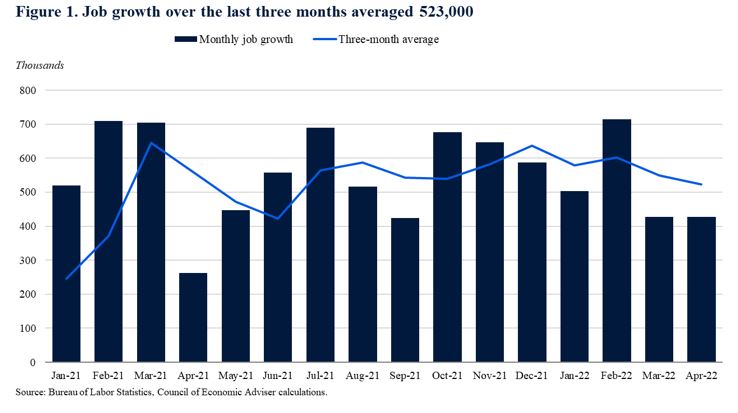
2. During the pandemic recovery, the labor market has seen extraordinary job growth. As the recovery continues, monthly job growth will likely begin to return to a pre-pandemic pace.
So far in 2022, job growth has averaged over 500,000 jobs per month. In contrast, from 2011 to 2019, job growth averaged about 194,000 jobs per month. Overall, the recovery from the pandemic recession has been much faster than after past recessions.
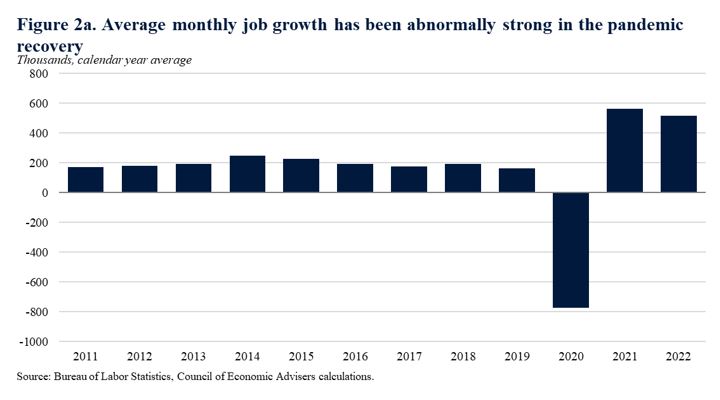
While it is unclear when the pace of job growth will slow, it will likely slow in the months to come. Indeed, during the later years of the recovery from the Great Recession, job growth was slower when the unemployment rate was lower. (As the jobless rate falls and the labor market closes in on full employment the number of available workers begins to decline.) In 2019 alone, for example, the unemployment rate averaged 3.7 percent—slightly above where it was in April 2022—and payroll growth averaged 164,000.
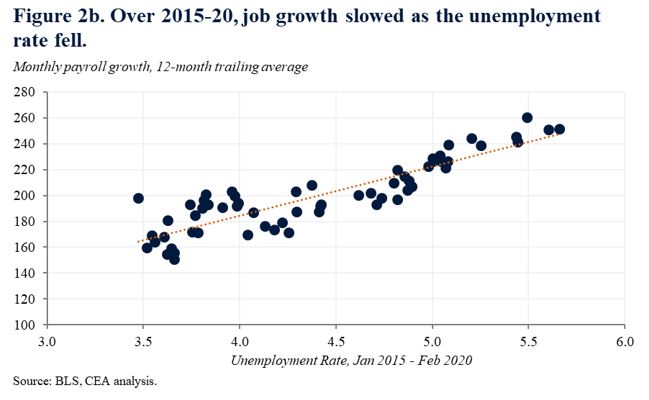
3. Some industries have recovered more strongly than others since the onset of the pandemic, suggesting that the post-pandemic economy may look different than the pre-pandemic economy
While job growth has been strong in the pandemic recovery, it has been stronger in some industries than in others, making the mix of employment different than before the pandemic. For instance, employment in transportation and warehousing is now 12 percent above where it was pre-pandemic. On the other hand, employment in mining and logging is 11 percent below where it was pre-pandemic. Employment in leisure and hospitality, a sector which was hit particularly hard by COVID-19, remains 8 percent below its pre-pandemic level.
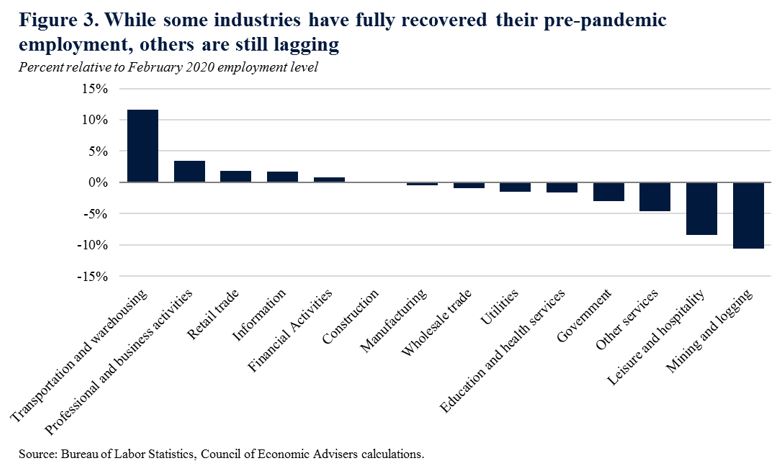
The recovery in employment in retail trade is particularly interesting. When the pandemic first hit, some economists thought the pandemic was “pulling forward” job losses in the retail sector that would have happened anyway as consumers shifted to buying online. Employment in retail trade, which contains both non-store retailers and in-person retail, is now 2 percent above its pre-pandemic level. While some of that strength reflects employment in non-store retailers, even after accounting for that sector retail trade employment is still above its pre-pandemic level, suggesting that in-person retail employment has expanded.
4. The labor force participation rate ticked down in April both overall and for people age 25-54 years old, but participation is up strongly over the year.
Labor force participation fell to 62.2 percent in April, while prime-age (25 to 54) labor force participation ticked down to 82.4 percent, after increases in March. Despite the decline in April, however, prime-age labor force participation has risen by 1.0 percentage point over the past year, a fast pace. Prior to the pandemic, the last time labor force participation had risen that quickly in a 12-month period was 1985.
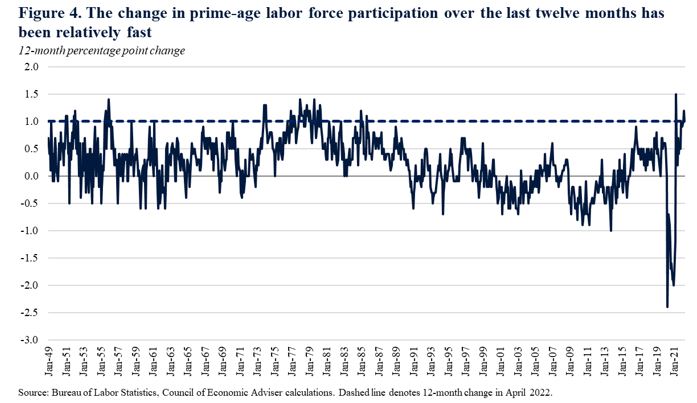
5. Nominal wage growth was solid in April 2022 and may be slowing.
Nominal average hourly earnings rose by 0.3 percent in April and by 5.5 percent over the last year. While the year-over-year growth rate is quite strong, the hourly earnings growth over the month was closer to a typical pre-pandemic pace. Looking at the three-month change as seen in Figure 5, nominal wage growth appears to be slowing.
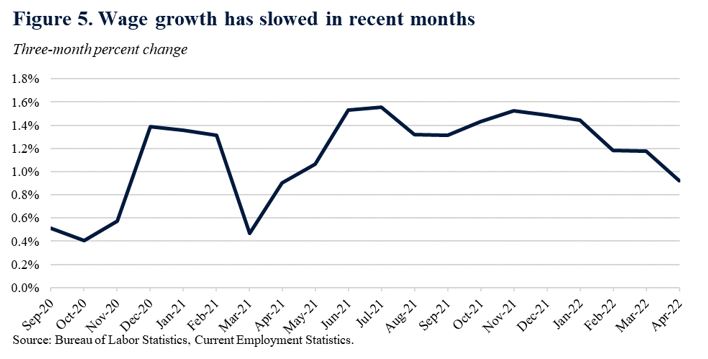
While we do not yet have inflation numbers for April, it is likely that yearly nominal wage growth was slower than inflation.
As the Administration stresses every month, the monthly employment and unemployment figures can be volatile, and payroll employment estimates can be subject to substantial revision. Therefore, it is important not to read too much into any one monthly report, and it is informative to consider each report in the context of other data as they become available.

